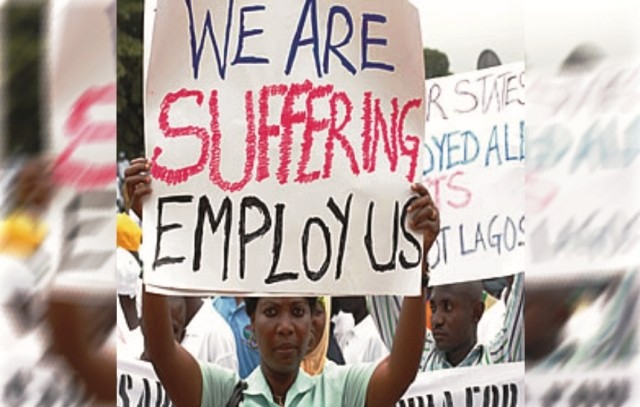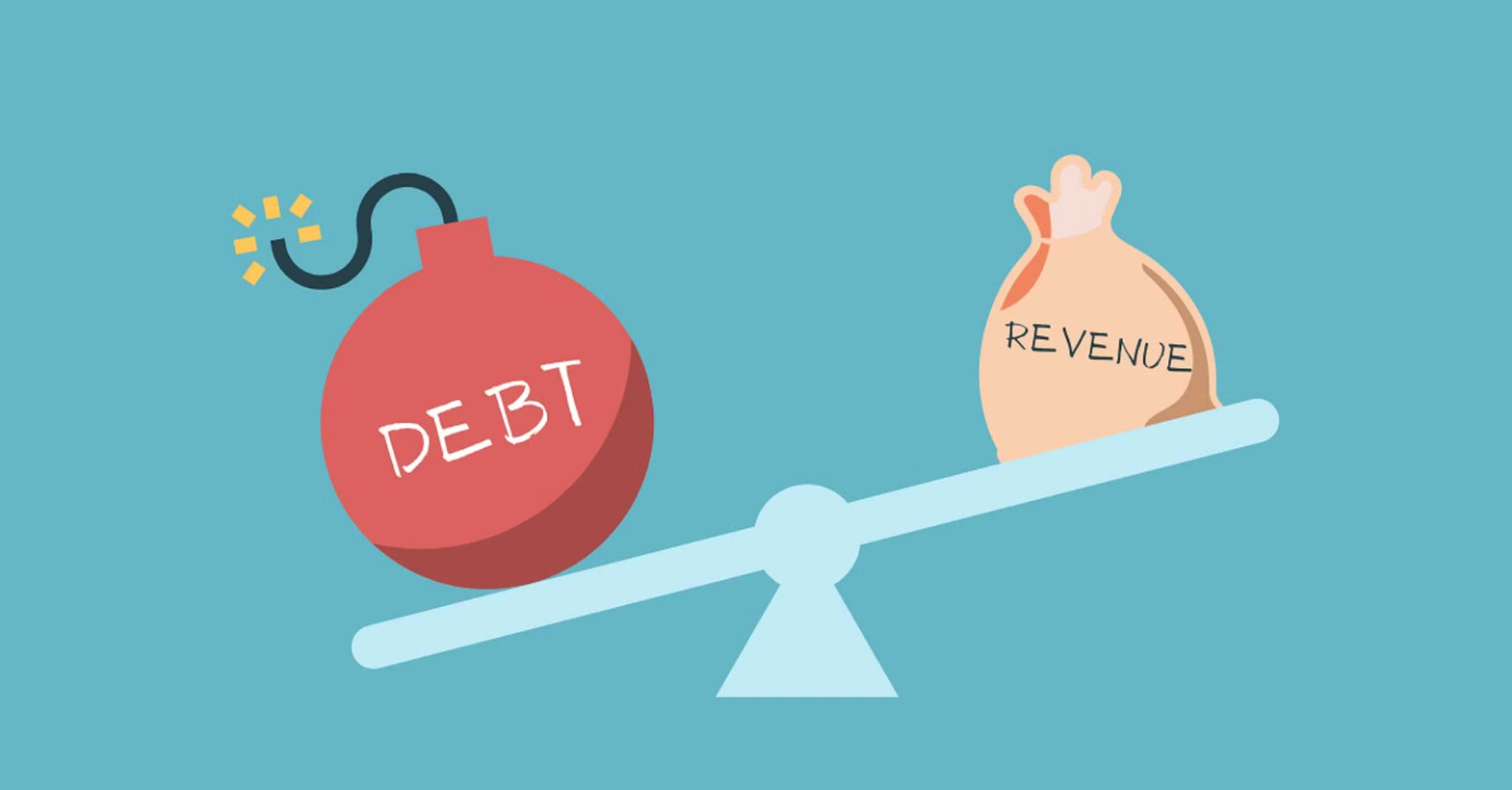Nigeria, Africa’s most populous nation and one of its largest economies faces mounting challenges related to its growing public debt.
As recorded by the Debt Management Office (DMO), Nigeria’s total public debt surged to N121.67 trillion as of March 31, 2024, representing a significant increase from N97.34 trillion in December 2023.
This rapid uptick emphasizes the urgent need for economic strategies that not only stabilize the nation’s financial health but also promote sustainable growth.
In this context, analyzing the debt profile relative to Nigeria’s Gross Domestic Product (GDP) and exploring viable methods to increase GDP becomes critical.
Understanding these dynamics will help policymakers implement effective measures to drive the economy forward while managing the burgeoning public debt.
The significant rise in Nigeria’s public debt, detailed by DMO, points to profound implications for the nation’s economy and, by extension, the future of work.
Here are a few ways this could unfold:
Economic Impact
- Inflationary Pressures: As the government borrows more, particularly from domestic sources, the liquidity in the economy could increase, leading to inflation. High inflation diminishes the purchasing power of workers, affecting their real income and standard of living.
- Depreciation of the Naira: With rising external debt, the pressure on Nigeria’s currency could intensify, leading to depreciation. This could increase the cost of imported goods and raw materials, affecting businesses that rely on these imports and potentially leading to job cuts.
Fiscal Constraints
- Increased Debt Servicing Costs: The more debt the government takes on, the higher the portion of its budget that will be devoted to servicing this debt (paying interest and principal). This reduces the fiscal space for other critical expenditures such as infrastructure, education, and healthcare, which are pivotal for long-term economic growth and job creation.
- Reduced Public Investment: Less money available for public investment could slow down infrastructure projects and reduce job opportunities in sectors like construction and public services.
Employment and Labor Market
- Public Sector Employment: With substantial debt servicing obligations, the government may be compelled to freeze hiring or reduce the workforce to manage wage bills. This could affect employment opportunities within the public sector.

- Private Sector Dynamics: High public debt and associated fiscal pressures may lead to higher taxes or reduced public investment in supportive infrastructure, both of which can impact private sector growth. Reduced private sector growth equates to fewer jobs and potentially lower wages.
- Skill Demand Dynamics: If the government prioritizes sectors that can generate immediate revenue (e.g., oil and gas) or sectors linked to foreign debt utilization (consultancy for managing or negotiating loans), there may be a skewed demand for skills in these areas, affecting the broader labour market.
Social and Policy Implications
- Social Safety Nets: With greater debt, there is likely to be less fiscal space to expand or even maintain social safety nets like unemployment benefits or subsidized healthcare, which can be critical in supporting workers between jobs.
- Policy Shifts: To manage the debt burden, the government may implement austerity measures or economic reforms that could include subsidy removal, increased taxation, or reduced public spending. These measures can lead to short-term economic hardship, layoffs, and social unrest.
- Attraction of Foreign Investment: A burgeoning debt profile can deter foreign investors due to perceived economic instability. Foreign direct investment (FDI) is crucial for job creation and economic diversification, and a decline in FDI could negatively impact job creation in sectors such as manufacturing, technology, and services.
Education and Skills Development
- Funding for Education: The fiscal strain might result in reduced budget allocations for education, impacting the quality and reach of educational services. Long-term, this can affect workforce skills development, creating a skills mismatch in the labour market.
- Emphasis on Technical and Vocational Training: To alleviate immediate employment challenges, there could be a shift towards promoting technical and vocational training (TVET) to quickly equip the workforce with skills that are in immediate demand.
Surmising, the rising public debt in Nigeria poses significant challenges for the future of work. It could lead to increased economic instability, reduced job opportunities, and a more challenging environment for both public and private sector employment.
Addressing these challenges requires strategic policy measures to ensure sustainable economic growth, job creation, and the improvement of living standards.
Balancing debt management with investments in critical sectors and maintaining social safety nets will be crucial in navigating these complex dynamics.
Comparison of Debt Profile to GDP and Strategies for Increasing GDP
The relationship between Nigeria’s debt profile and its Gross Domestic Product (GDP) is a critical measure of the nation’s economic health and sustainability.
As public debt continues to rise due to factors such as decreased oil revenues, increased borrowing to finance budget deficits, and currency devaluation, understanding this dynamic is essential.
A high debt-to-GDP ratio can indicate potential economic instability and hinder the country’s ability to attract foreign investment. However, this scenario can be mitigated if the debt is effectively utilized for productive investments that spur economic growth.
To enhance Nigeria’s GDP sustainably, strategic measures need to be taken, such as diversifying the economy, developing infrastructure, improving education, supporting SMEs, strengthening governance, and boosting exports.
These strategies are pivotal for achieving a balanced approach to managing debt while fostering robust economic growth.
Nigeria’s rising public debt must be analyzed in the context of its Gross Domestic Product (GDP) to understand the broader economic implications. Here’s a comparative analysis, along with strategies to boost GDP:
Debt Profile vs. GDP

- Debt-to-GDP Ratio:
– As of March 31, 2024, Nigeria’s total public debt stands at N121.67 trillion.
– Assuming Nigeria’s GDP projects around USD 550 billion for the same period (historically, Nigeria’s GDP hovered around USD 440-450 billion in recent years), the debt-to-GDP ratio would be approximately 16.63%.
- Historical Context:
– Historically, Nigeria has maintained a relatively low debt-to-GDP ratio compared to many other countries. However, the sharp increase in public debt suggests growing fiscal pressures.
- Implications of the Debt-to-GDP Ratio:
– Economic Stability: A higher debt-to-GDP ratio can lead to concerns about debt sustainability and potential default risks.
– Credit Rating: As debt levels increase, Nigeria may face downgrades from credit rating agencies, increasing borrowing costs.
– Investment Climate: Investors may perceive higher debt levels as a risk, impacting foreign direct investment (FDI).
Strategies to Increase GDP
To sustainably increase GDP and manage the debt profile, Nigeria can focus on both short-term and long-term strategies spanning various sectors:
- Diversification of the Economy:
– Agriculture: Modernize and mechanize agriculture to increase productivity. Investment in agribusiness can create jobs, enhance export potential, and reduce reliance on oil.
– Manufacturing: Develop the manufacturing sector by providing incentives for local production, supporting industries with high export potential, and improving industrial infrastructure.
- Improving Infrastructure:
– Transportation: Invest in roads, railways, ports, and airports to reduce transportation costs, improve logistics, and boost trade.
– Energy: Address power supply challenges by investing in renewable energy sources and modernizing the power grid to ensure reliable electricity.
- Enhancing Human Capital:
– Education: Invest in education to improve literacy rates and skill levels. Vocational training and STEM (Science, Technology, Engineering, and Mathematics) education can prepare the workforce for high-demand jobs.
– Healthcare: Improve healthcare infrastructure and access to ensure a healthy workforce capable of high productivity.
- Promoting Technology and Innovation:
– Support the tech ecosystem with policies that encourage startups and innovation hubs. Digital economy growth can lead to job creation, improve service delivery, and increase productivity.
- Improving the Business Environment:
– Enhance the ease of doing business by streamlining regulatory processes, reducing corruption, and providing a stable policy environment. Simplifying tax policies and reducing bureaucratic red tape can attract more domestic and foreign investments.
- Encouraging Foreign Direct Investment (FDI):
– Provide incentives for foreign companies to invest in priority sectors. Policies that ensure security, political stability, and infrastructure development can make Nigeria an attractive investment destination.
- Fiscal Reforms:
– Implement fiscal reforms to increase government revenue through efficient tax collection and broadening the tax base. Reducing subsidies and closing tax loopholes can improve fiscal health.
– Manage expenditures effectively by prioritizing high-impact projects and reducing wastage.
- Trade Policies and Agreements:
– Leverage trade agreements within the African Continental Free Trade Area (AfCFTA) to open up new markets for Nigerian products.
– Promote non-oil exports by improving product quality standards and certification processes to meet international market requirements.
- Financial Sector Development:
– Strengthen the financial sector to improve access to credit for SMEs. Promoting financial inclusion can boost entrepreneurship and small business growth.
– Develop the capital market to provide long-term financing options for businesses and infrastructure projects.
Summarily, increasing Nigeria’s GDP is a multifaceted endeavour that requires coordinated efforts across sectors.
By diversifying the economy, improving infrastructure, enhancing human capital, promoting technology and innovation, and creating a conducive business environment, Nigeria can achieve sustained economic growth. Addressing fiscal imbalances through strategic fiscal reforms will also be crucial in ensuring debt sustainability and enhancing the overall economic resilience of the country.
Conclusively, addressing Nigeria’s rising public debt while fostering economic growth requires a multifaceted approach.
By comparing the debt profile to Nigeria’s GDP, it becomes evident that strategic economic diversification, robust infrastructure development, human capital investment, and an enhanced business environment are essential.
Emphasizing technology and innovation, promoting foreign direct investment, enacting fiscal reforms, and leveraging trade agreements can collectively bolster GDP growth.
Implementing these strategies will not only improve Nigeria’s economic resilience but also ensure a more sustainable trajectory for managing public debt.
Through coordinated efforts and sound policy decisions, Nigeria can navigate its current economic challenges and pave the way for a prosperous future.
======
The Writer, Prof. Ojo Emmanuel Ademola is the first Nigerian Professor of Cyber Security and Information Technology Management, and the first Professor of African descent to be awarded a Chartered Manager Status.






